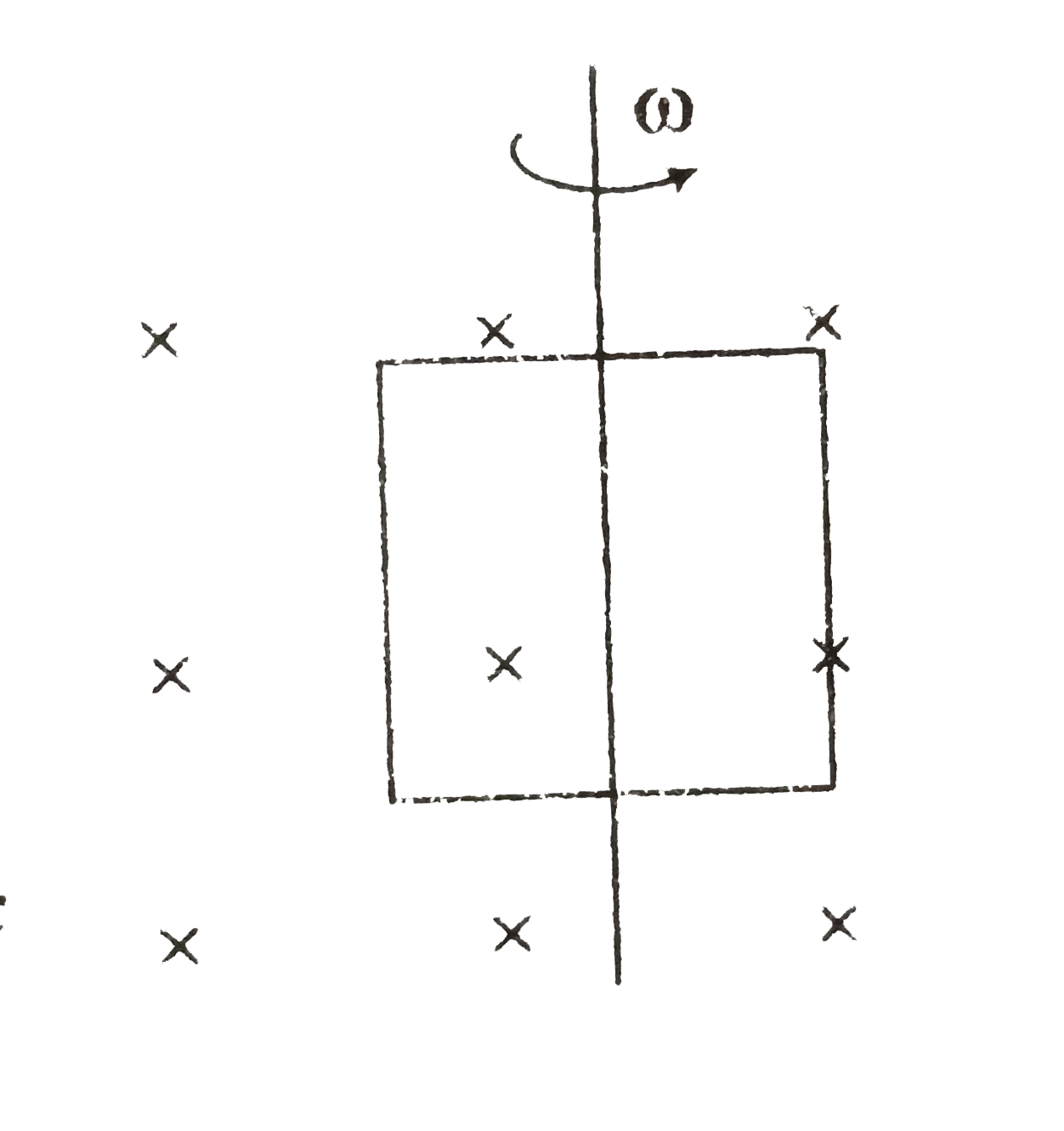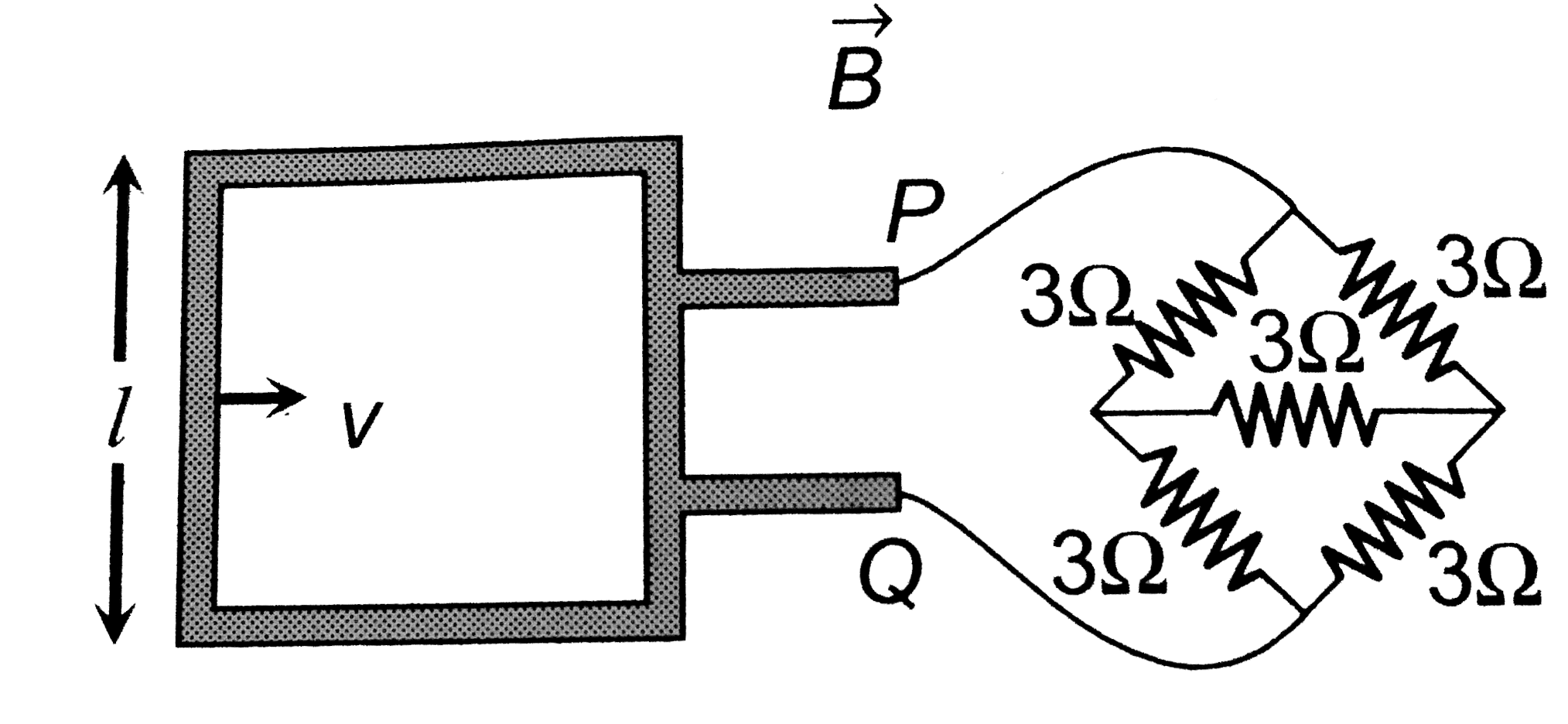A conducting loop is pulled with a constant velocity towards a region of unifrom maganetic field of induction B as shown in the figure. Then the current involved in the loop is (d>r)

clockwise while entering
anti-clockwise while entering
zero when completely inside
clockwise while leaving
When the loop is drawn into the magnetic filed, the area of the portion loop in the magnetic field will increase. That means, the flux linkage increases. Therefore a (vortex) emf is induced in the loop so as to oppose the change, that is to say to oppose the increase in magnetic flux in the loop. Therefore, the current will have to induce in anti-clockwise direction to induce an opposing magnetic field, that is pointing outward of the page. After the complete entry of the loop into the magnetic field, no variation of flux occurs. Therefore it induces no current so long as the loop . Is completely inside the magnetic field. When it emerges out of the magnetic field, following the previous argument, the direction of induced current in it will be reversed (clockwise)
Similar Questions
A conducting bar is pulled with a constant speed v on a smooth conducting rail. The region has a steady magnetic field of induction B as shown in the figure. If the speed of the bar is doubled then the rate of heat dissipation will

View SolutionA square metal wire loop of side 20 cm and resistance 2Ω is moved with a constant velcoity v0 in a uniform magnetic field of induction B = 1 Wb/m2 as shown in the figure. The magnetic field lines are perpendicular to the plane of the loop. The loop is connected to a network of resistance each of value 5Ω. The resistances of the lead wires BF and AE are negligible. What should be the speed of the loop, so as to have a steady current of 2 mA in the loop? Give the direction of current in the loop.

View SolutionA semicircular loop of radius R is rotated with an angular velocity ω perpendicular to the plane of a magnetic field B as shown in the figure. Emf Induced in the loop is

View SolutionAn electron moves along the line AB with constant velocity V which lies in the same plane as a circular loop of conducting wire , as shown in the figure . What will be the direction of current induced in the loop ?

View SolutionA conducting loop confined in a plane is rotated in its own plane with some angular velocity.A uniform and constant magnetic field exist in the region.Find the current induced in the loop.
View SolutionA uniform circular loop of radius a and resistance R is pulled at a constant velocity v out of a region of a uniform plane of the loop and the velocity are both perpendicular to B. Then the electrical power in the circular loop at the instant when the arc (of the circular loop) outside the region of magnetic field subtends an angle π3 at the centre of the loop is

View SolutionA rectangular loop with a slide wire of length l is kept in a uniform magnetic field as shown in the figure. The resistance of slider is R. Neglecting self inductance of the loop find the current in the wonnector during its motion with a velocity v.

View SolutionA metallic square loop ABCD is moving in its own plane with velocity v in a uniform magnetic field perpendicular to its plane as shown in the figure, Find
a) in which sides of the loop electric field is induced.
b) Net emf induced in the loop.
c) If one side .BC. is outside the field with remaining loop in the field and is being pulled on D with a constant velocity then induced current in the loop.

View SolutionAssertion A conducting loop is rotated in a uniform magnetic field with constant angular velocity ω as shown in figure. At time t = 0, plane of the loop is perpendicular to the magnetic field. Induced emf produced in the loop is maximum when plane of loop is parallel to magnetic field.
Reason When plane of loop is parallel to magnetic field, then magnetic flux passing through the loop is zero.

View SolutionA square metallic wire loop of side 0.1 m and resistance of 1Ω is moved with a constant velocity in a magnetic field of 2wb/m2 as shown in figure. The magnetic field field is perpendicular to the plane of the loop, loop is coonected to a network of resistances. what should be the velocity of loop so as to have a steady current of 1mA in loop?

View Solution
